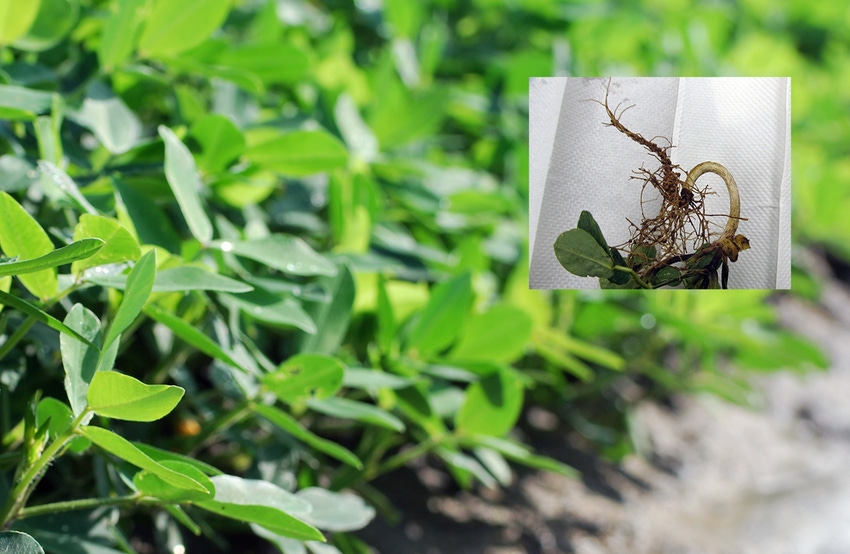April 23, 2020

One of the rural legends I have heard during my career as a peanut weed scientist has been that Dual/Dual Magnum can cause an early-season problem known as J-rooting. This rumor has always been a bur under my saddle. It was apparently started back in 1980.
In 1980, I was just a pimple-faced high school sophomore with college football aspirations and had absolutely no clue that I would become an Extension weed specialist.
This year will mark my 23rd growing season working on weed control issues in peanut. Since that time, I have had a small hand in the peanut registrations of nine herbicides including Dual Magnum (1997), Outlook (1999), Strongarm (2000), Valor (2001), Spartan (2003), Cobra (2005), Warrant (2014), Zidua (2017), and Anthem Flex (2020).
According to a recent USDA survey, Dual Magnum, or S-metolachlor, was used on 32% of the peanut acres in Georgia. Let me remind you of the differences between the old Dual and newer Dual Magnum formulations. Dual 8E (a 50% + 50% mixture of the R+S isomers of metolachlor) was first registered for use in peanut in 1980 by Ciba-Geigy.
Dual Magnum 7.62EC (a 12% + 88% mixture of the R+S isomers of metolachlor) was registered for peanut in 1997 by Novartis. The S-isomer of metolachlor is more active than the R-isomer. Isomers are compounds that have the same chemical formula, but the elements of the molecules are arranged slightly differently.
I conducted some field research in 2017-2019 to try and scientifically determine the role of Dual Magnum in this J-rooting phenomenon. In these field trials, I made PRE applications of various rates of Dual Magnum to peanut grown under high-moisture conditions (7.8” to 11.3“of rainfall and/or irrigation in first 30 days). At around 21 days after planting, I dug up the peanut plants and looked for signs of J-rooting.
A few things to know from these trials are:
J-rooting occurred in the absence of Dual Magnum.
The labeled rates of Dual Magnum (16 oz/A or 21 oz/A) had no effect on J-rooting.
A 2X labeled rate (not recommended) of Dual Magnum (42 oz/A) had no effect on J-rooting in two out of three years.
So, if typical application rates of Dual Magnum are not causing J-rooting in peanut, what are the potential other causes? I do not think that this phenomenon has been well researched but some peanut agronomists (or those specialists who wannabe but couldn’t be weed scientists, except for DJ!) would suggest that J-rooting can be caused by many factors including seed quality/vigor, soil compaction, cool temperatures, and/or other types of stresses. Interestingly, the more I look for J-rooting in peanut fields, the more I can find it.
Since I was not a weed scientist back in 1980, I really have no clue what happened with Dual and peanut during that inaugural year. All I can say is that my current research results would suggest that Dual Magnum applied at labeled rates plays NO role in the development of J-rooting in peanut. Consequently, I will continue to recommend Dual Magnum and other Group 15 herbicides for the control of pigweed, annual grasses, and tropical spiderwort in peanut without hesitation.
As always good weed hunting!
About the Author(s)
You May Also Like






